5 Minutes to Understand Blades for Plastic Granulators
The granulator blades and knives play a decisive role to Plastic Granulators. It is also the key to achieving high-efficient granulating process. We will introduce blades and knives of plastic granulators from its structures and materials. Then you will have a better understanding and know how to select a Plastic Granulator best fit for your injection molding, blow molding or extrusion business.
3 Common Structures of Blades and Knives for Plastic Granulators
There are 3 common structures of blades for plastic granulators. They are teeth blades, staggered blades and paddle blades.
-
Teeth Blade
As the teeth cutter resembles a pineapple, it is also called the pineapple knife. Its structure and processing technology are very complicated, which usually works with the staggered blades. The staggered blades can easily catch and destroy large sprues for the coarse grinding, and then the teeth cutter can give even fine grinding to the materials, finally obtaining the granule of the required size. The coarse grinding and fine grinding can be processed together with high efficiency. The blade structure features low rotating speed and low noise in its design, and the screenless design reduces the cost input of the easily broken parts. However, it also has obvious disadvantages: the granulating capacity is small, and the initial cost of equipment input is also high as its complex cutter structure. This kind of plastic granulator blade is mainly applicable to granulate the sprues, which are assembled on the granulator to work beside the injection molding machines. The representative models are SG-24N and SG-14 series.
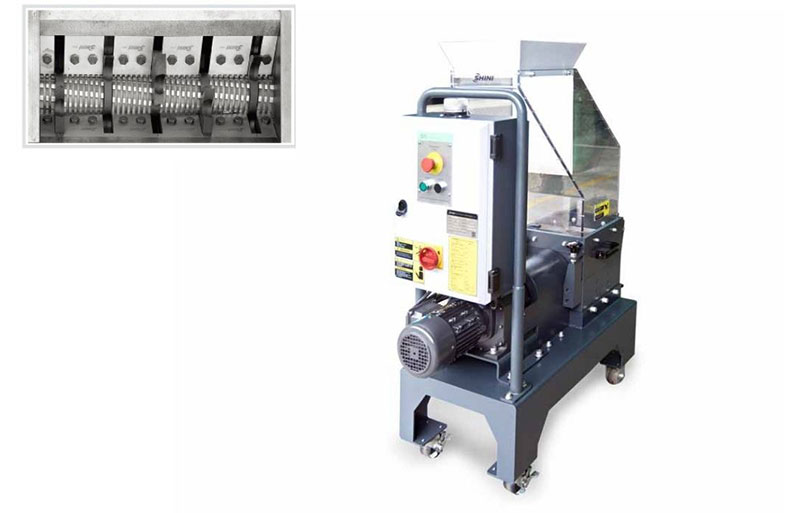
Section View of Trapezoid Teeth BaldeCutter
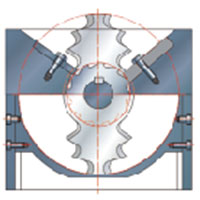
-
Staggered Blade
The staggered blade usually adopts a staggered and staircase layout, and the cutting angles between fixed blades are large. With a fewer cutters to granulate, the granulating resistance is rather small, which is more suitable for granulating the plates. Generally, the rotating blade is mounted on the blade rest that no need of adjustment, and the fixed blade is mounted on the rack of the cutting chamber that can achieve cutter gap compensation via adjusting screws. The staggered blades are also called the disposable cutter and are cheaper than the paddle blade which can be replaced directly after long-term use and no need for re-sharpening. The representative modes of the granulator with the staggered blades are SG-16N, SG-20NC, SG-23 and SG-23E. In these models, SG-16N and SG-20NC are mainly used besides the injection molding machines, and the SG-23 and SG-23E are mainly used for central granulating.
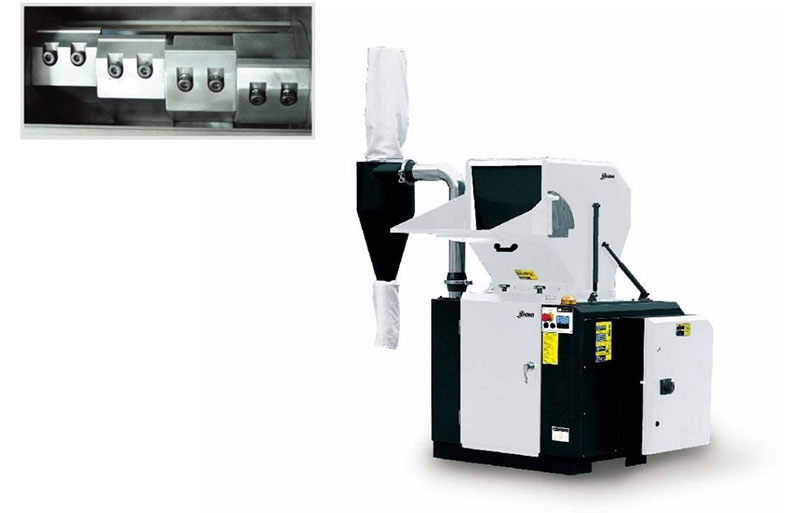
Section View of Trapezoid Staggered Baldecutter
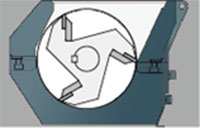
-
Paddle Blades
The paddle blade, also called the scissor cut granulator blade, adopts an increased blade design and V-type cutting technology, and the increased blade structure looks like the scissor that achieves material gradual granulating with less resistance. However, compared with the staggered blade, its cutting angle between the rotating blade and fixed blade is small, ensuring a bigger effective space in the cutting chamber, which is easier to catch the material, and is more suitable for granulating large housings. The V-type cutting technology is mainly used for models with large size cutting chambers. For these models, the cutting chamber is long. If each row of the rotating blade or fixed blade uses one blade, the blade’s processing cost will increase, and the convenience will decrease. Therefore, it usually divides the blade into two pieces in V type to optimize the cutter size and push the material to the center during granulating, which reduces the abrasion of the structures on both sides of the cutting chamber and improves the cutting efficiency of the middle parts in the chamber. The fixed blades of the paddle cutters are usually fixated on the rack of the cutting chamber, and the rotating blades are fixated on the blade rest that rotates with the shaft. The gap between the rotating blades can be adjusted by the presetting knife jig outside the machine to achieve quick and convenient clearance adjustment. The representative modes of the granulator with this blade cutter are SG-30/36/43/50/70 and the corresponding E series that is mainly used for central granulating.
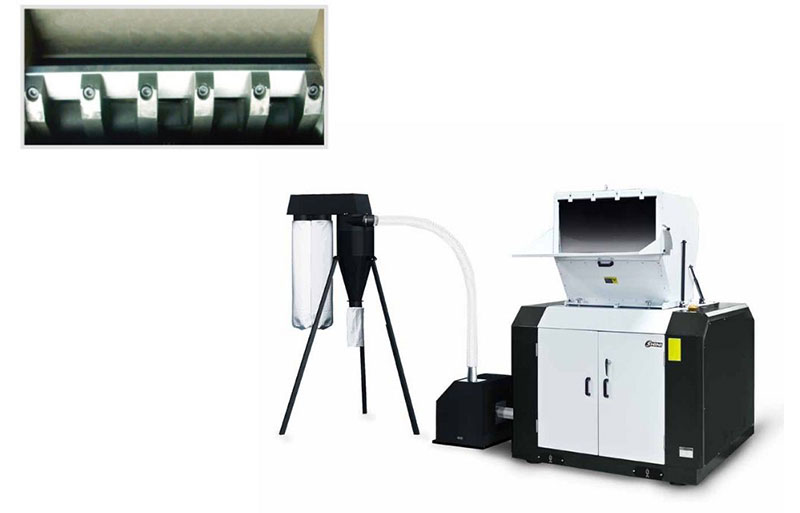
Read Also : How to Select Plastic Granulators for Your Injection Molding, Blow Molding, Extrusion or Recycling?
2 Common Materials of Blades and Knives for Plastic Granulators
The most common materials used for blades of plastic granulators are SKD11 and V-4E.
-
SKD 11
The blades and knives of plastic granulators made of SKD 11 is mainly used for conventional material granulating, featuring high hardness and high wear resistance. SKD 11 is the Japanese steel code name that is strictly focused on material selection. At first, it must have high strength and high hardness, but the cutter is easy to damage if it is too hard. Thus, the cutter is necessary to have certain toughness, keep good wear resistance and machining property, which requires reasonable and high processing precision. Taking the teeth cutter made by Shini as an example, the process flow is as follows: material feeding – hole drilling -molding-mold cutting- teeth milling- thermal treatment- sand blasting- inner grinding - external grinding - surface grinding- quality inspection, as well as many processes included. The shape of the teeth blade is very complicated so that the company uses four-axis machining center for the milling as to ensure quality. Finally, for everyone, the high-quality teeth blade is visible, but our devotion to the manufacturer is invisible.
-
V-4E
V-4E is the Swedish steel code name. Compared with the SKD 11, it remains certain toughness while achieving higher hardness and wear resistance. Therefore, it is mainly used for granulating glass fiber-contained materials. Normally, when the glass fiber content of the material is not larger than 30%, the granulator with this cutter can be applicable. The blade is made of real materials with high-precision manufacture and elaborate design that used in Shini Granulator provides the customers with a “weapon” for easier granulating.
Choose the Shini Group for Industrial Plastic Granulators. Feel free to contact us today for more information.
Shini Group’s Plastics Material Handling Equipment offers the most advanced energy saving machines to enhance your production efficiency. Many well-known and highly respected companies around the world employ Shini plastics auxiliary equipment, such as BYD and TOYOTA for manufacturing automobiles, FOXCONN for manufacturing electronic components, as well as SANYO, SIEMENS, and HAIER for manufacturing home appliances! Other companies that utilize Shini’s equipment for high quality results include HSUFUCHI (food production industry), JIN-JIAN (medical Industry).
- If you want to know more about these and our other products, please check the link below. Plastic Auxiliary Equipment. Bulk Bag Unloading Equipment;
- To keep updated about the latest news from the Shini Group, please follow us on our Social Media Channels :
